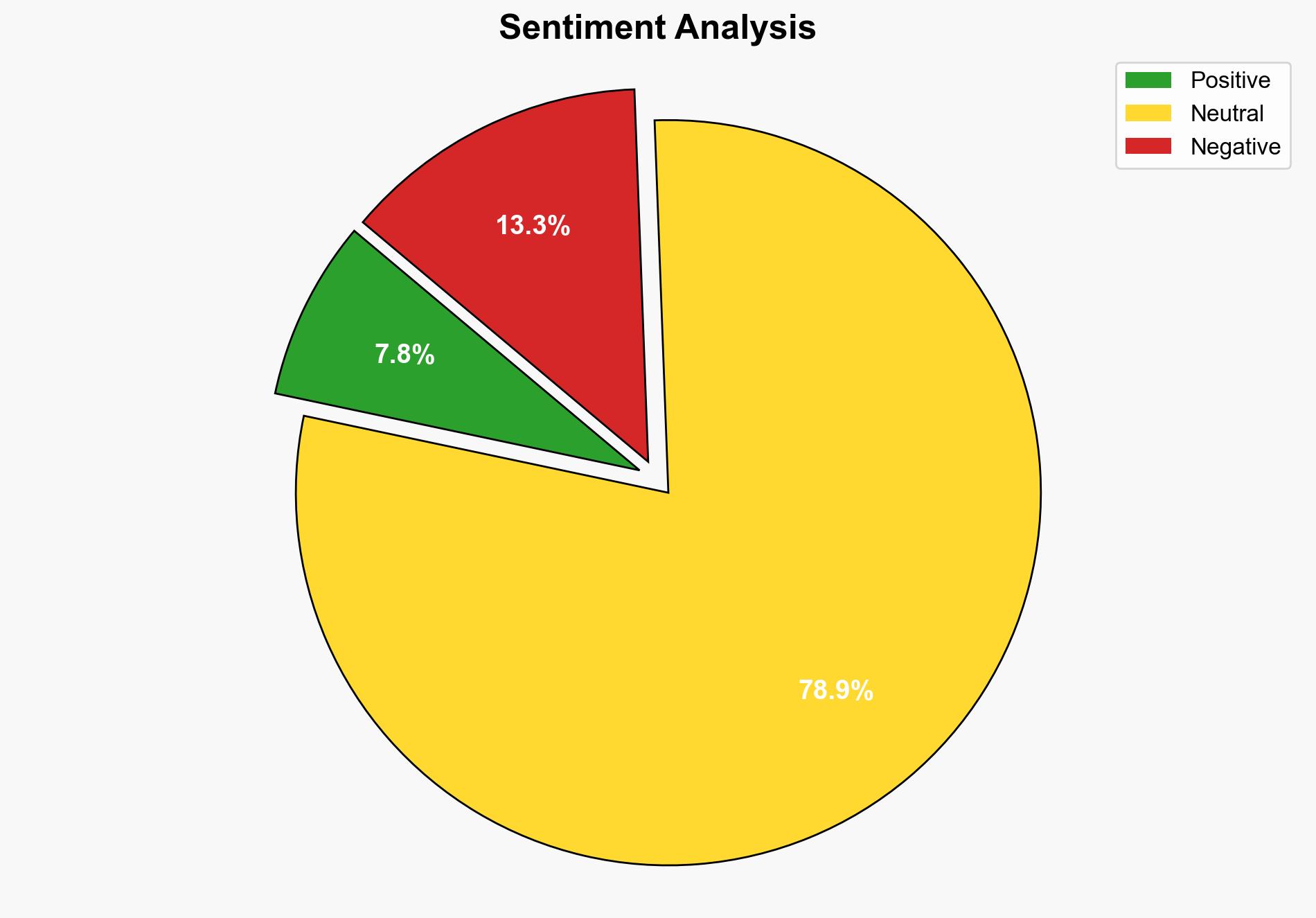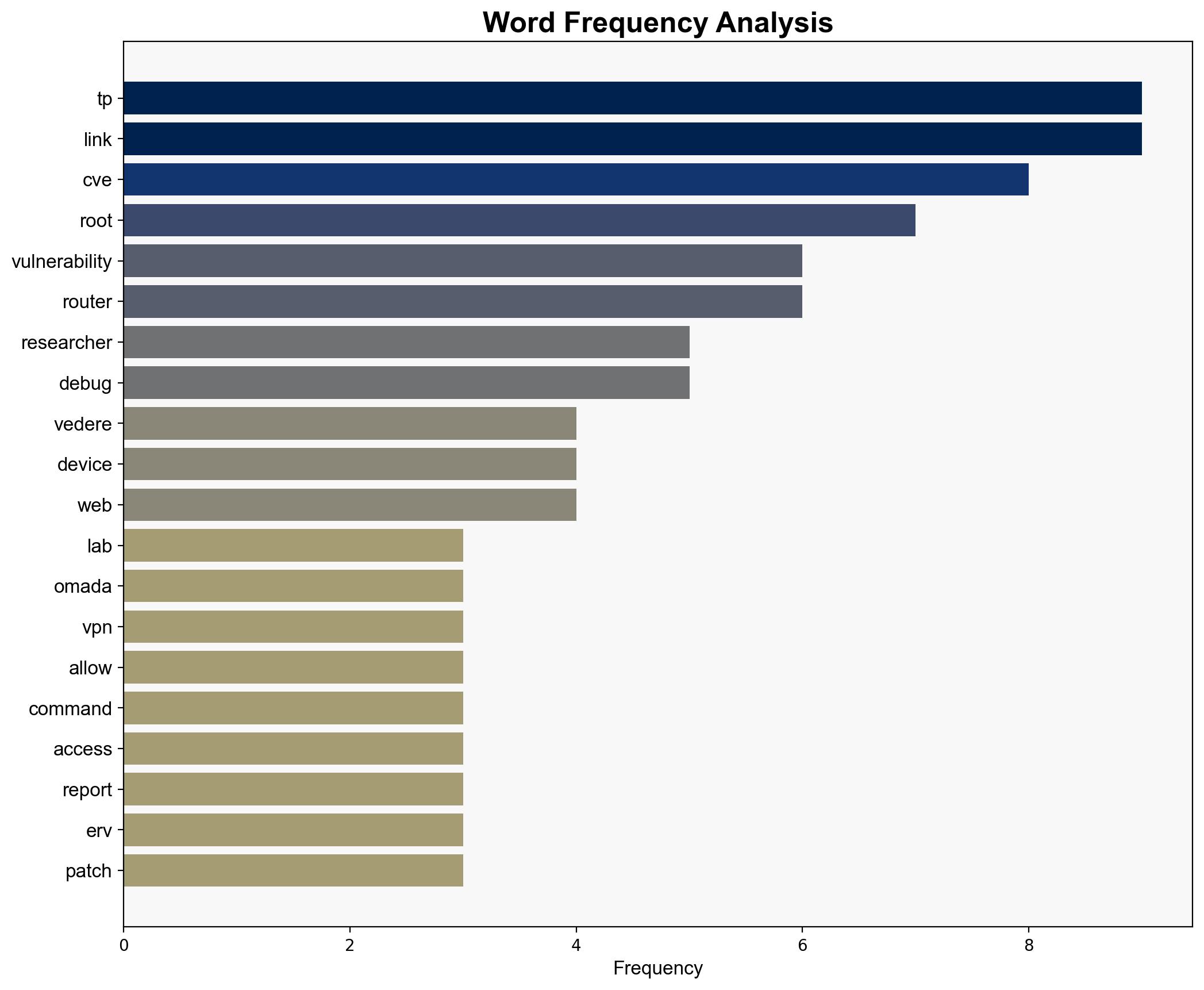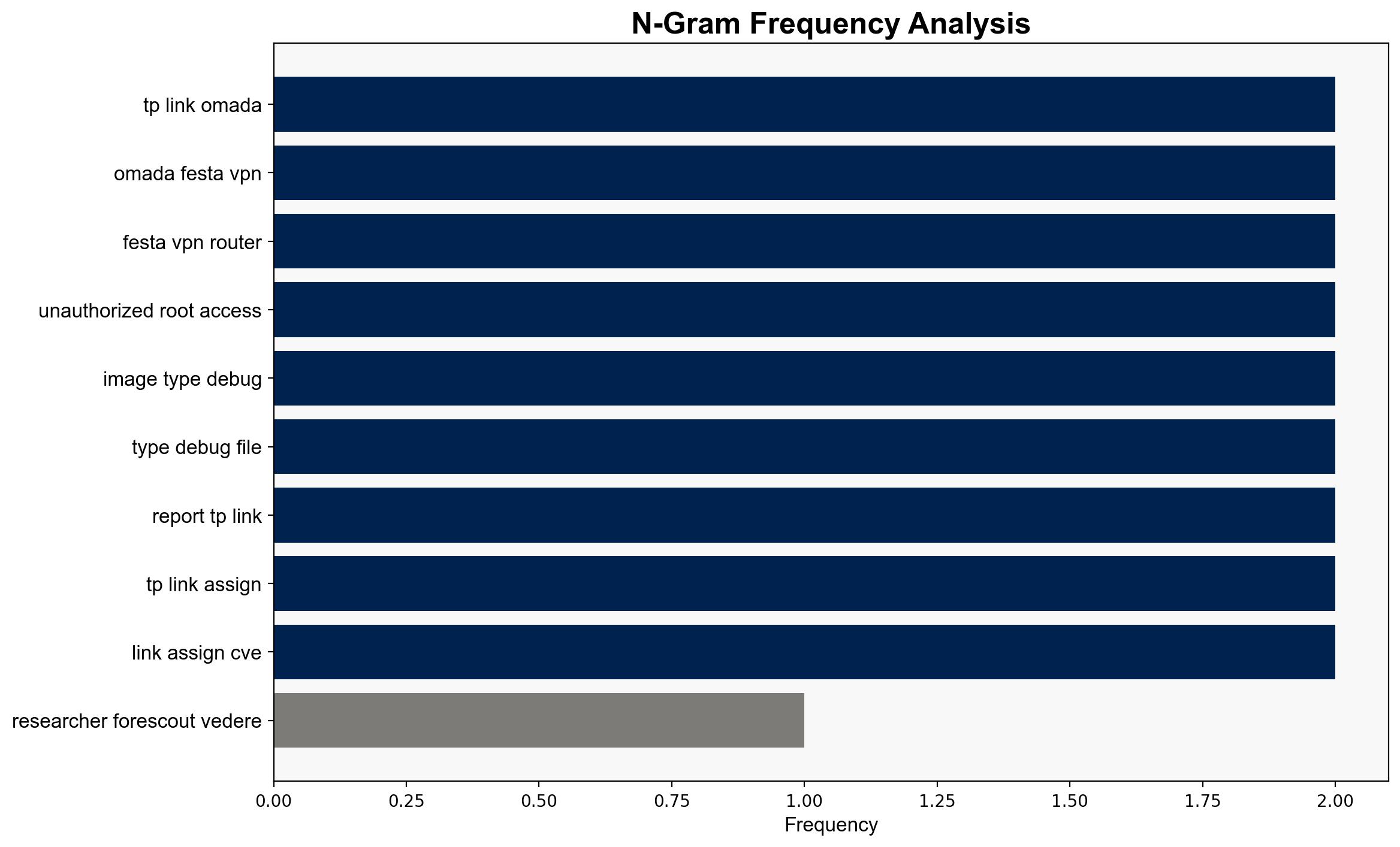Major Vulnerabilities Found in TP-Link VPN Routers – Infosecurity Magazine
Published on: 2025-10-23
Intelligence Report: Major Vulnerabilities Found in TP-Link VPN Routers – Infosecurity Magazine
1. BLUF (Bottom Line Up Front)
The discovery of critical vulnerabilities in TP-Link VPN routers poses significant cybersecurity risks, potentially allowing unauthorized root access. The most supported hypothesis is that these vulnerabilities are primarily due to incomplete patching and residual debug code. Confidence level: Moderate. Recommended action is immediate deployment of updated security patches and enhanced monitoring of network traffic.
2. Competing Hypotheses
Hypothesis 1: The vulnerabilities are primarily due to incomplete patching and residual debug code left by TP-Link, allowing unauthorized access through alternative attack paths.
Hypothesis 2: The vulnerabilities are a result of deliberate actions by a malicious insider or external actor to introduce backdoors into the firmware for espionage or sabotage purposes.
Using ACH 2.0, Hypothesis 1 is better supported by the evidence of incomplete fixes and residual debug code. Hypothesis 2 lacks direct evidence but cannot be entirely ruled out due to the potential for insider threats or external manipulation.
3. Key Assumptions and Red Flags
Assumptions: It is assumed that TP-Link’s patching process is flawed, leading to these vulnerabilities. It is also assumed that the vulnerabilities are not intentionally placed.
Red Flags: The presence of residual debug code suggests potential oversight or negligence. The lack of evidence for deliberate sabotage raises questions about internal security protocols.
4. Implications and Strategic Risks
The vulnerabilities could lead to unauthorized access to sensitive networks, potentially compromising personal and organizational data. This poses risks to national security, especially if exploited by state-sponsored actors. Economically, it could damage TP-Link’s reputation and lead to financial losses. Geopolitically, it could strain relations if linked to foreign interference.
5. Recommendations and Outlook
- Immediate application of TP-Link’s firmware patches and additional security controls, such as web application firewalls.
- Conduct thorough security audits of network devices to identify and mitigate potential vulnerabilities.
- Scenario-based projections:
- Best Case: Successful patching and monitoring prevent exploitation, restoring trust in TP-Link products.
- Worst Case: Exploitation leads to widespread data breaches and geopolitical tensions.
- Most Likely: Partial mitigation with ongoing monitoring and gradual improvement in security measures.
6. Key Individuals and Entities
No specific individuals are mentioned in the source text. Entities involved include TP-Link and Forescout Vedere Labs.
7. Thematic Tags
national security threats, cybersecurity, counter-terrorism, regional focus





